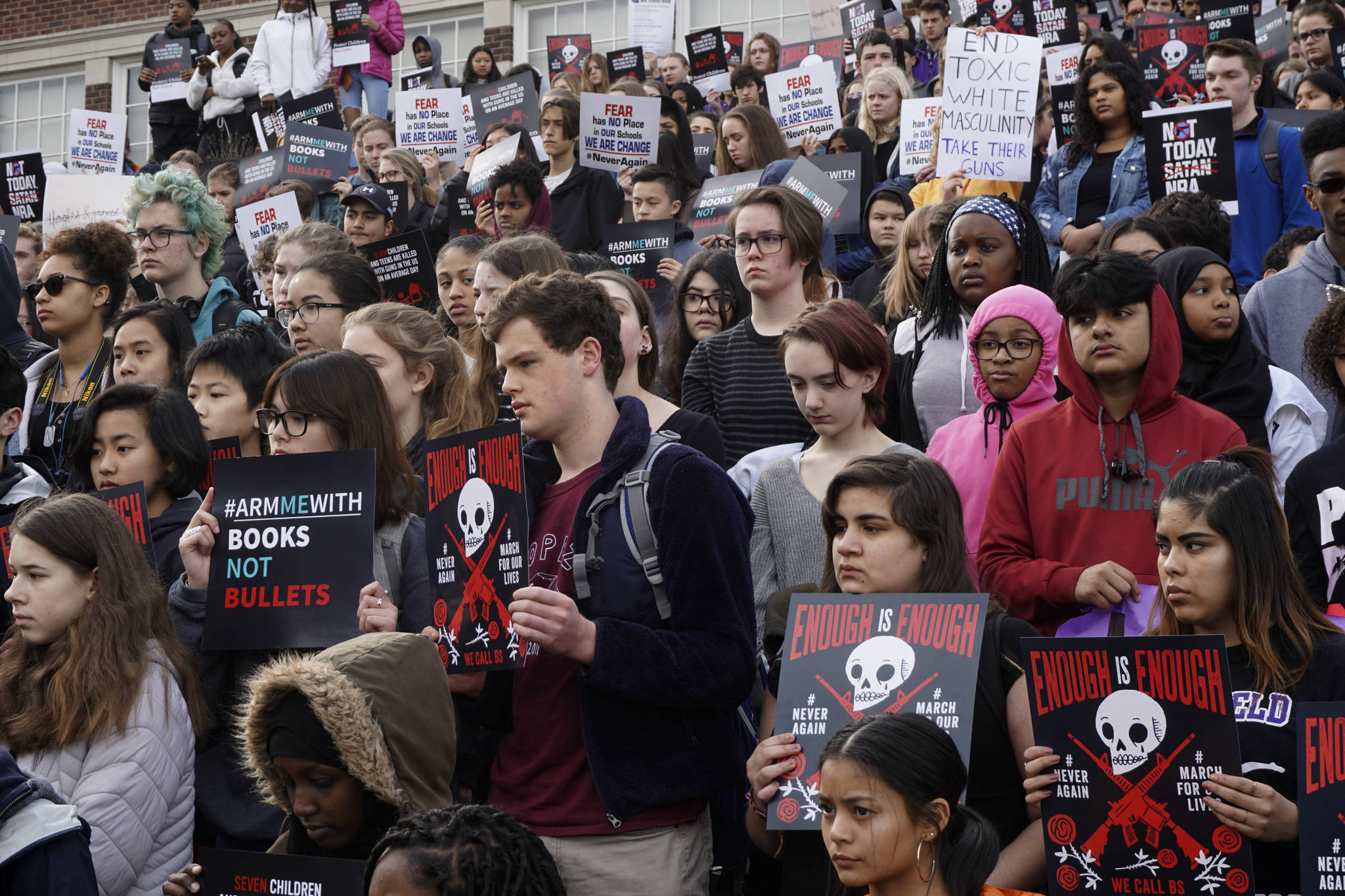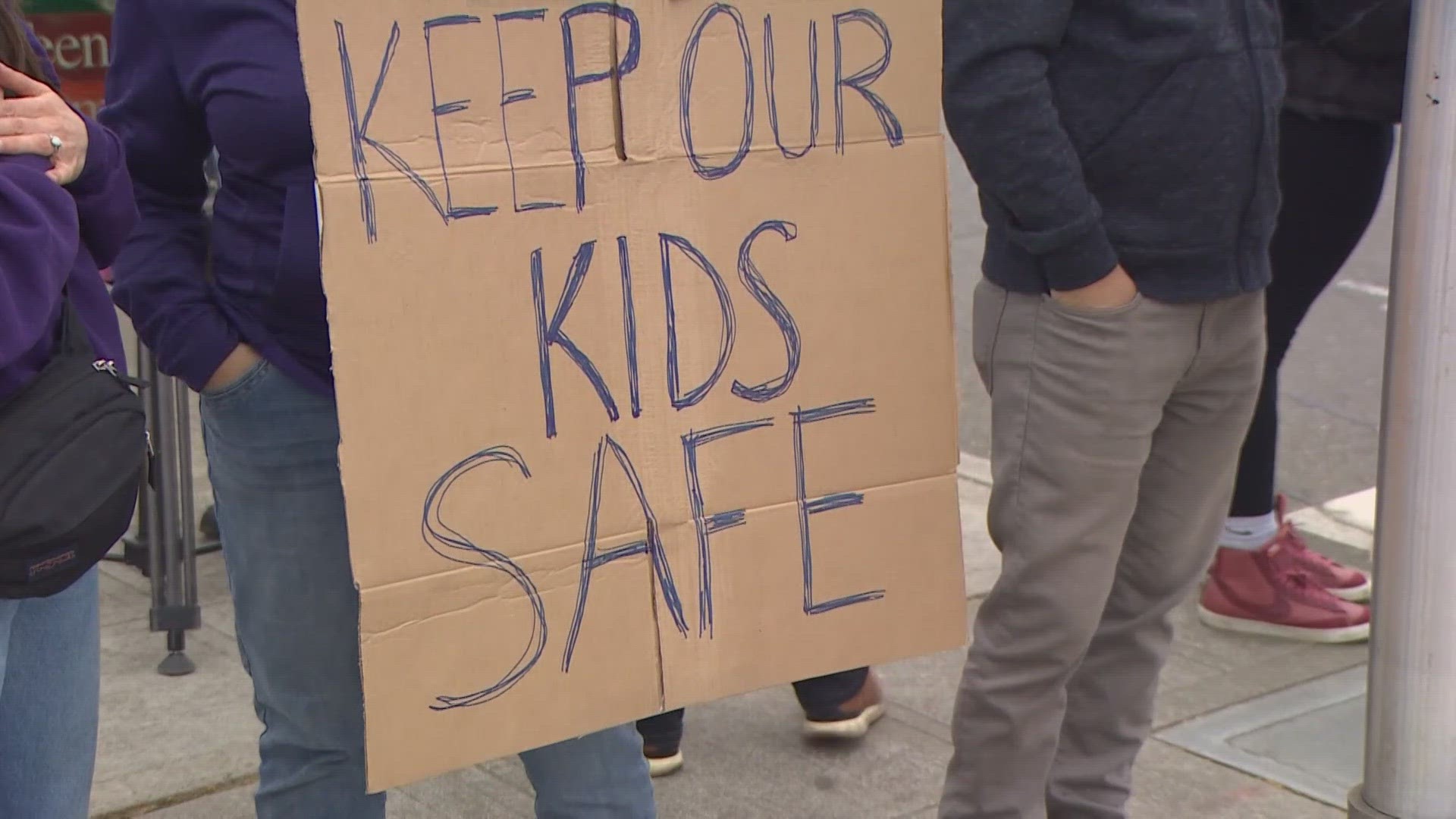It all started back in 1981 when a group of brave students and teachers at Garfield High School decided they'd had enough. This wasn't just another school protest; this was a movement that would change the face of education in Seattle and beyond. The Garfield High School protest became a symbol of resistance against standardized testing and bureaucratic control over public schools. It's a story that needs to be told, and we're diving deep into what really happened.
Picture this: a regular school day turned into a historic event. Students and teachers at Garfield High School in Seattle took a stand against the Texas Assessment of Basic Skills (TABS) test, which they felt was unfair and didn't accurately measure their abilities. This wasn't just a fight for one school; it was a battle for educational justice.
What made this protest so unique? Unlike many other school protests, this one had the full support of the teachers' union and the community. It was a powerful combination of students, educators, and parents coming together to say, "Enough is enough." Let's explore how it all went down and why it still matters today.
Read also:Matt Meese Wife The Fascinating Story You Didnrsquot Know About
Background of Garfield High School
Before we dive into the protest itself, let's take a moment to understand the school at the heart of it all. Garfield High School, located in Seattle's Central District, has always been more than just a school. It's a community hub, a place where diverse voices come together to learn and grow. Established in 1921, Garfield has a rich history of activism and excellence.
Key Facts About Garfield High School
- Founded in 1921, making it one of Seattle's oldest high schools
- Known for its diverse student body and commitment to equity
- Home to numerous award-winning programs in arts, athletics, and academics
- Played a pivotal role in shaping Seattle's educational landscape
Garfield wasn't just another school; it was a place where students felt empowered to make a difference. This sense of empowerment laid the groundwork for what would become a historic protest.
What Led to the Garfield High School Protest?
Let's talk about the elephant in the room: standardized testing. Back in the early '80s, the Texas Assessment of Basic Skills (TABS) was introduced as a way to measure student performance. But here's the kicker – many teachers and students at Garfield felt that this test didn't reflect their true abilities or the diverse learning styles of their community.
The protest was fueled by frustration over a one-size-fits-all approach to education. Teachers argued that the test didn't take into account the unique needs and strengths of their students. It was a clash between bureaucratic control and educational freedom.
Key Issues That Sparked the Protest
- Concerns over the fairness and accuracy of standardized testing
- Frustration with a one-size-fits-all approach to education
- Desire for more autonomy and flexibility in teaching methods
- Support from the teachers' union and local community
These issues weren't just about one test; they were about the future of education itself. The Garfield High School protest became a rallying cry for change across the nation.
The Day It All Changed
On February 2, 1981, something extraordinary happened at Garfield High School. Teachers and students decided they wouldn't administer or take the TABS test. Instead, they used the time to focus on meaningful learning activities that aligned with their values and goals.
Read also:Asia Macey Rising Star In The Entertainment World
This wasn't just a one-day event; it was a movement that gained momentum over time. Teachers and students worked together to create alternative assessments that better reflected their abilities and achievements. It was a powerful statement about the importance of personalized education.
How the Protest Unfolded
- Teachers refused to administer the TABS test
- Students opted out of taking the test
- Alternative learning activities were implemented
- Community support played a crucial role in sustaining the protest
What made this protest so impactful was the unity and determination of everyone involved. It wasn't just about skipping a test; it was about standing up for what they believed in.
The Role of the Teachers' Union
One of the key factors that made the Garfield High School protest so successful was the support of the Seattle Education Association (SEA), the local teachers' union. The union played a vital role in organizing and sustaining the protest, providing legal and logistical support to the teachers and students involved.
The union's involvement sent a powerful message: educators have the right to advocate for better policies and practices in their schools. It showed that when teachers and students come together, they can make a real difference.
Why Union Support Mattered
- Provided legal protection for teachers and students
- Helped organize and coordinate protest activities
- Amplified the message of the protest to a wider audience
- Ensured that teachers' voices were heard in policy discussions
The union's involvement turned what could have been a small-scale protest into a national movement for educational reform.
Community Reaction and Support
One of the most remarkable aspects of the Garfield High School protest was the overwhelming support it received from the local community. Parents, alumni, and community leaders rallied behind the students and teachers, recognizing the importance of their cause.
This groundswell of support wasn't just about one school; it was about the future of education in Seattle and beyond. The community understood that the issues raised by the protest were relevant to all schools and all students.
How the Community Got Involved
- Parents attended rallies and meetings to show their support
- Local businesses donated resources to help sustain the protest
- Community leaders spoke out in favor of educational reform
- Media coverage brought national attention to the cause
The community's involvement turned the protest into a movement that resonated far beyond the walls of Garfield High School.
The Impact on Education Policy
The Garfield High School protest had a lasting impact on education policy, both locally and nationally. It sparked a conversation about the role of standardized testing in public schools and the need for more flexible and personalized approaches to education.
In the years following the protest, many school districts began to rethink their testing policies, recognizing the limitations of one-size-fits-all assessments. The protest became a catalyst for change, inspiring educators and policymakers to seek more equitable and effective ways to measure student achievement.
Key Policy Changes Inspired by the Protest
- Increased emphasis on alternative assessments
- Greater flexibility in teaching methods and curriculum
- More attention to the needs of diverse student populations
- Recognition of the importance of community involvement in education
The legacy of the protest continues to influence education policy today, reminding us of the power of collective action and the importance of standing up for what we believe in.
Lessons Learned from the Garfield High School Protest
So, what can we learn from this historic event? The Garfield High School protest teaches us that change is possible when people come together to fight for what they believe in. It shows us the power of unity, determination, and community support in achieving meaningful reform.
It also reminds us that education is more than just a test score. It's about empowering students to reach their full potential and preparing them for the challenges of the future. The protest was a powerful statement about the importance of personalized, equitable education for all.
Key Takeaways
- Change is possible when people unite for a common cause
- Education is more than just standardized testing
- Community involvement is crucial for effective reform
- Personalized approaches to education benefit all students
The lessons of the Garfield High School protest are as relevant today as they were back in 1981. As we continue to navigate the challenges of modern education, let's remember the power of standing up for what we believe in.
Looking to the Future
As we reflect on the legacy of the Garfield High School protest, it's important to consider what the future holds for education reform. The issues raised by the protest are still relevant today, as educators and policymakers continue to grapple with questions about standardized testing, equity, and personalized learning.
The protest serves as a reminder that progress is possible when we work together to create a better future for all students. It's a call to action for everyone involved in education to continue pushing for change and advocating for policies that support student success.
What's Next for Education Reform?
- Continued focus on alternative assessments and personalized learning
- Greater emphasis on equity and inclusion in education
- Increased community involvement in school decision-making
- Recognition of the importance of teacher autonomy and professional development
The future of education reform depends on our willingness to learn from the past and build on the progress that has been made. The Garfield High School protest is a powerful reminder of what can be achieved when we work together for a common goal.
Conclusion
The Garfield High School protest was more than just a moment in history; it was a movement that changed the face of education in Seattle and beyond. It taught us the importance of standing up for what we believe in and the power of collective action to achieve meaningful reform.
As we look to the future, let's remember the lessons of the protest and continue to advocate for policies that support student success and equity in education. Together, we can create a brighter future for all students.
So, what do you think? Do you have a story to share about education reform or a personal experience with standardized testing? Leave a comment below and let's keep the conversation going. And if you found this article helpful, don't forget to share it with your friends and family.
Table of Contents


